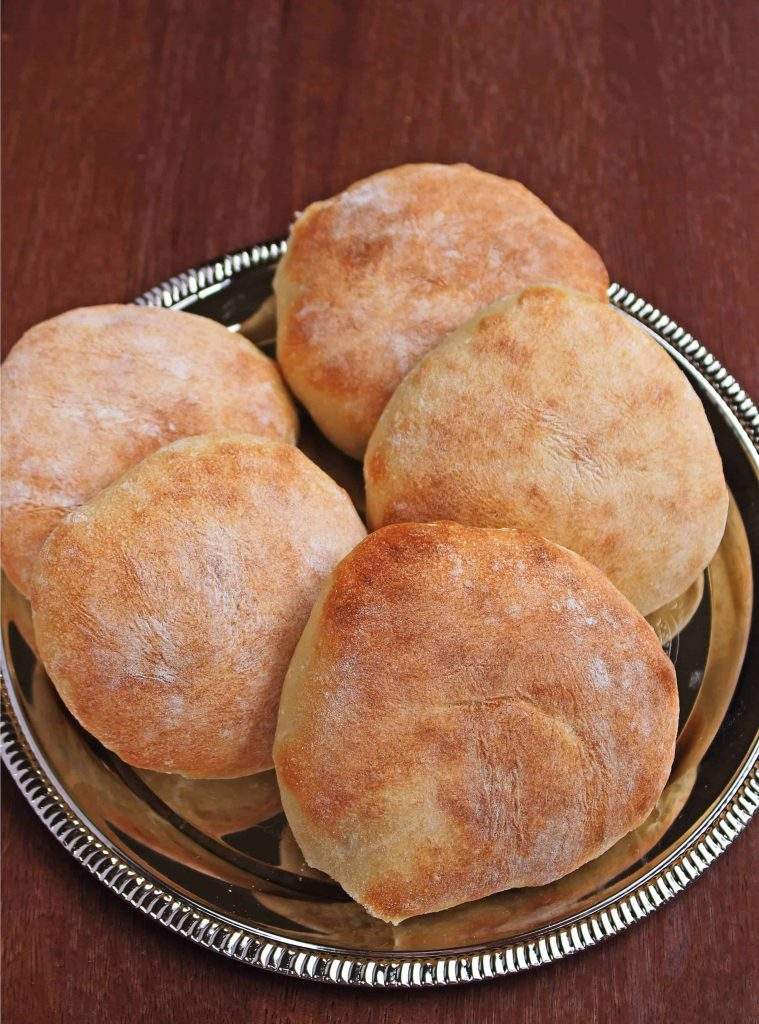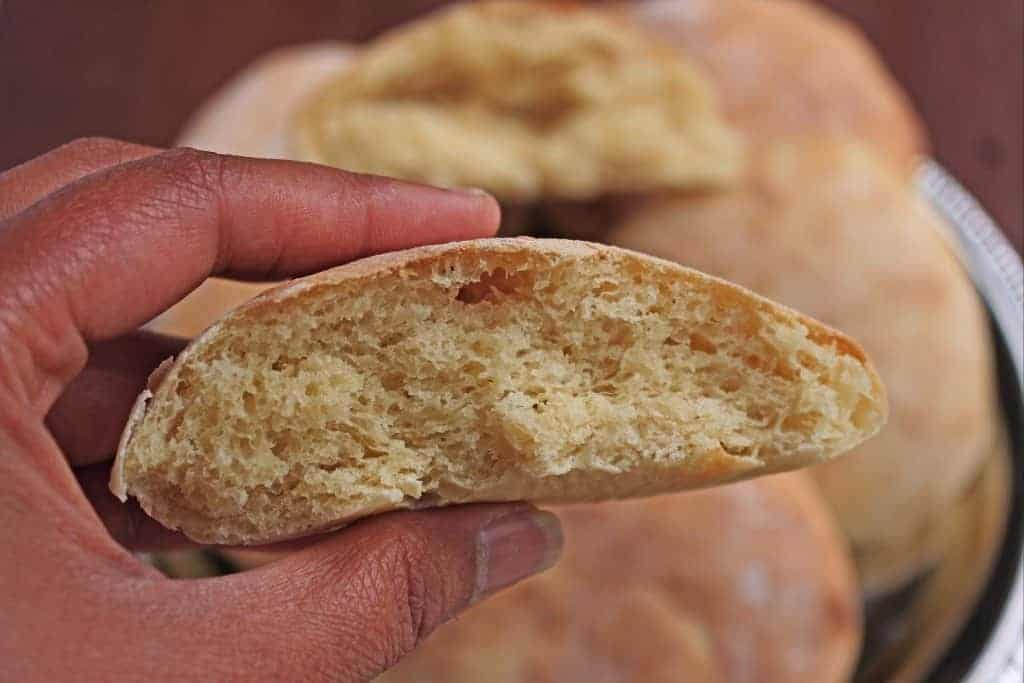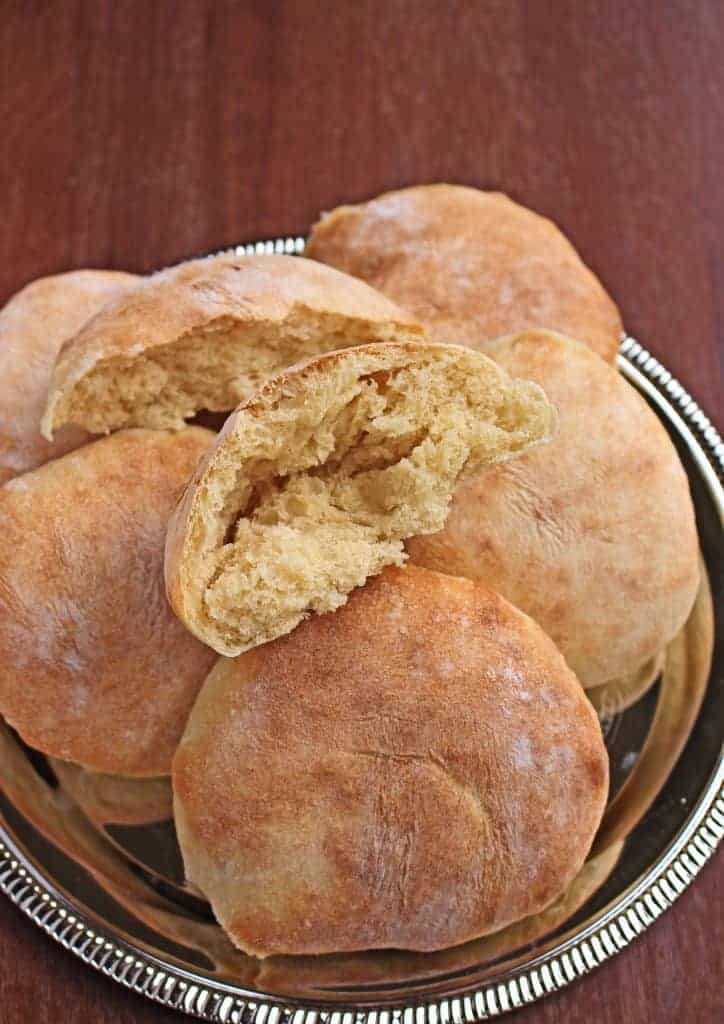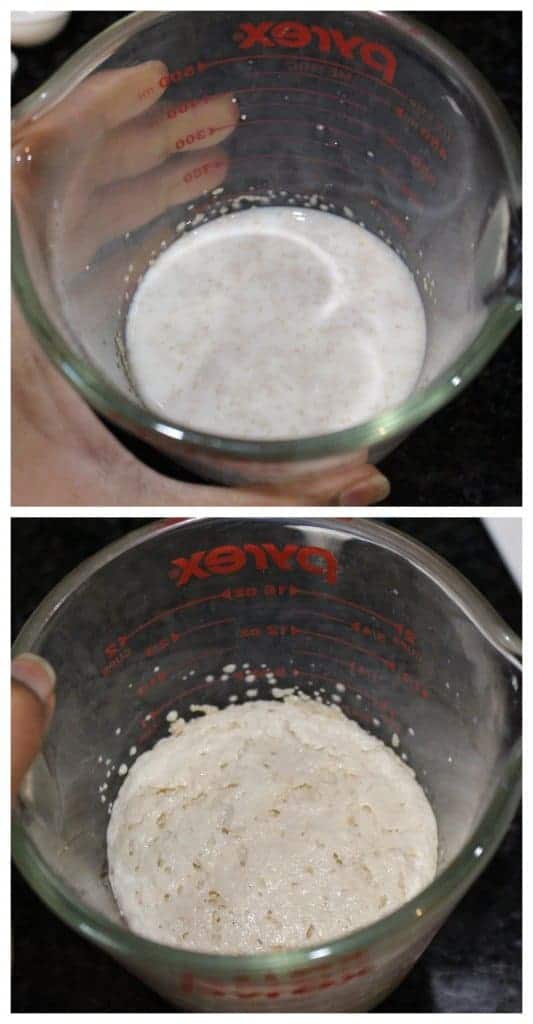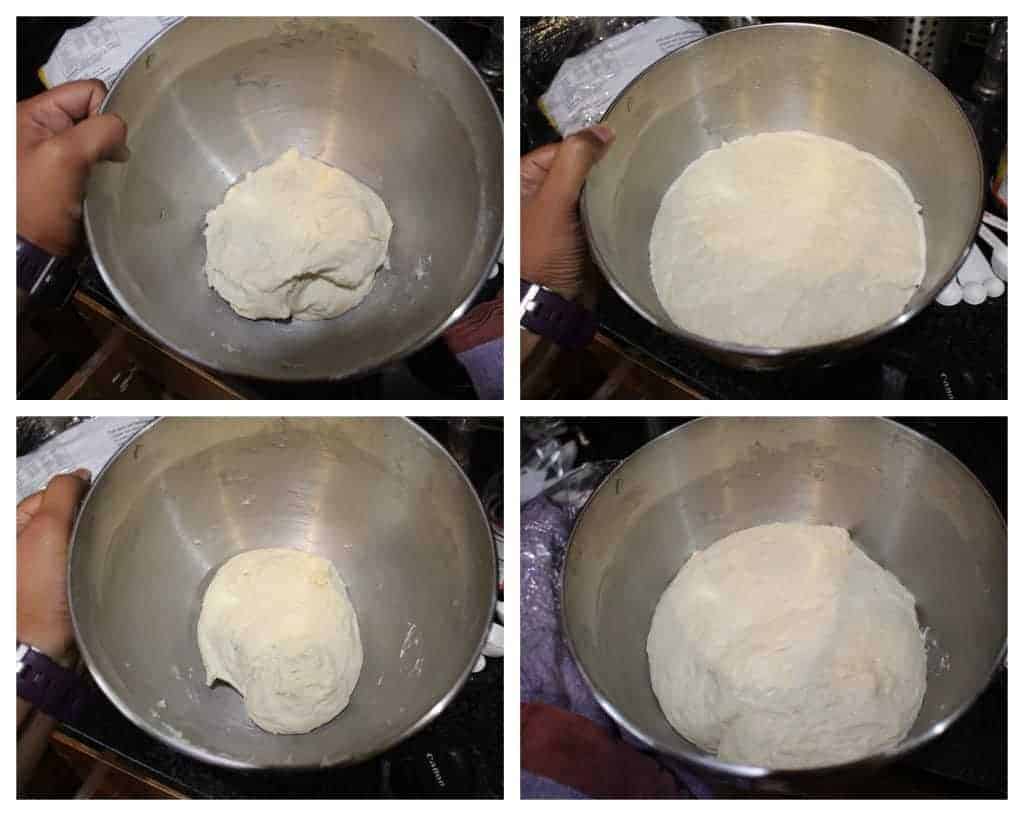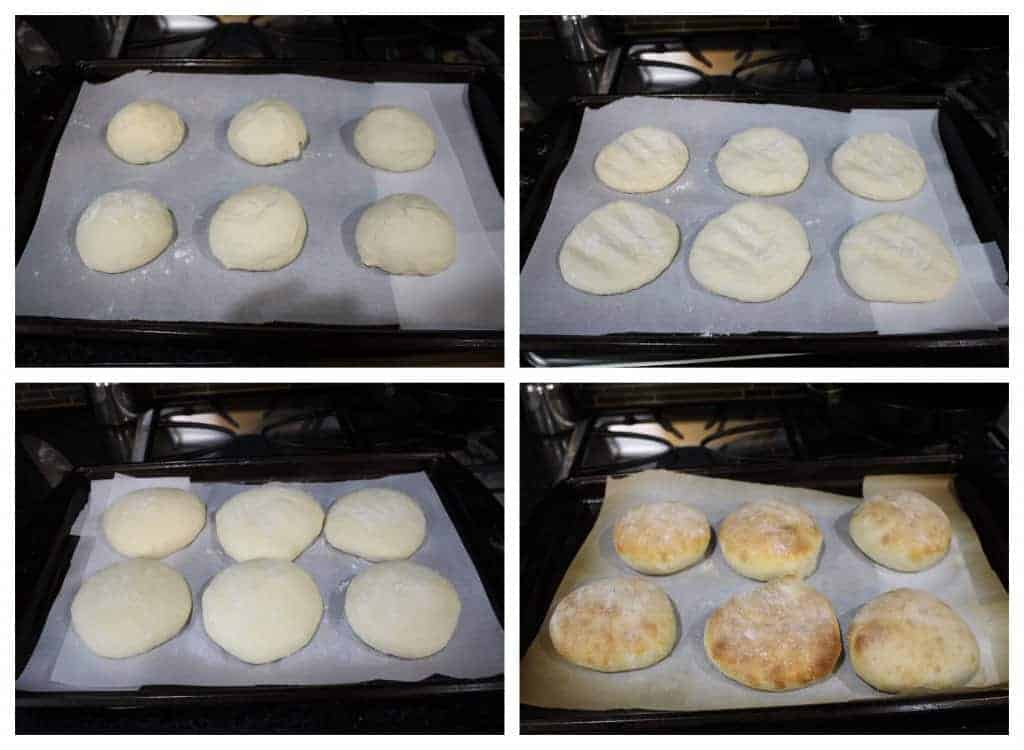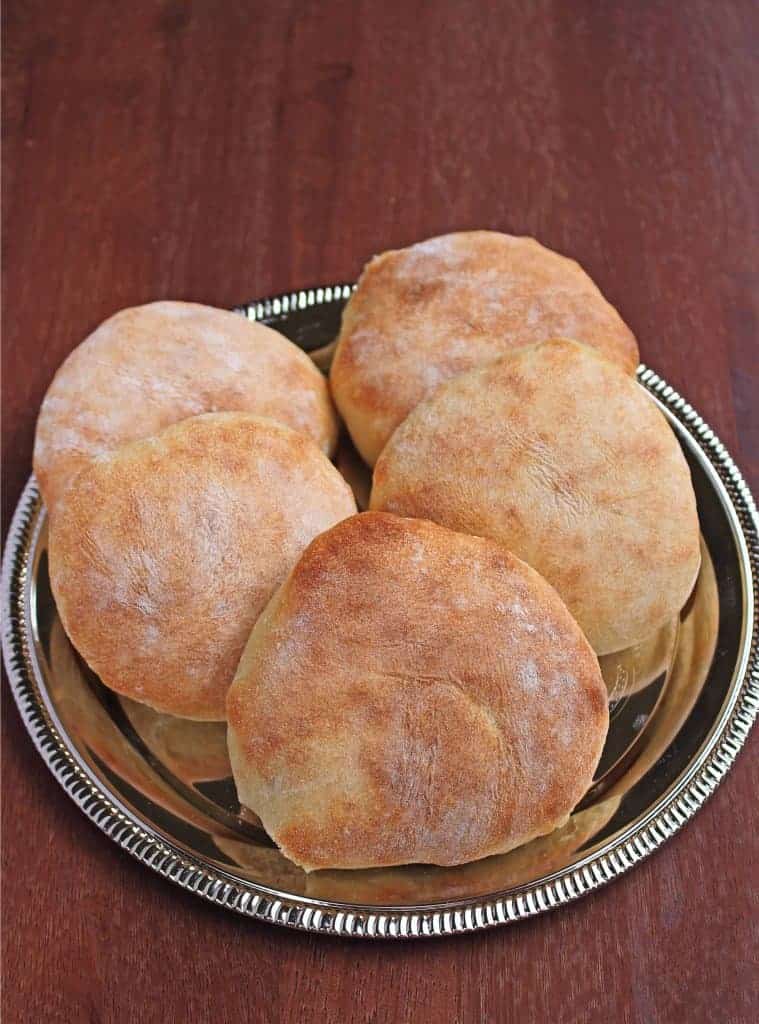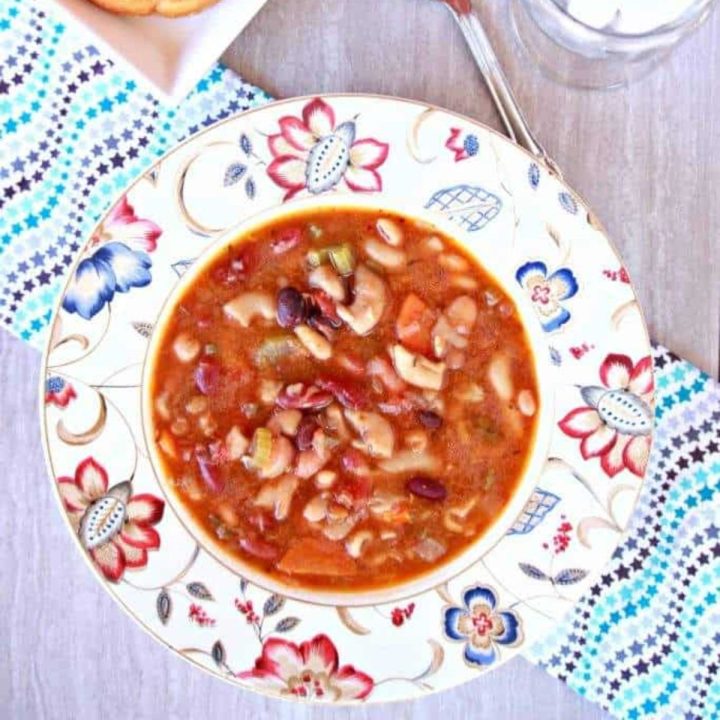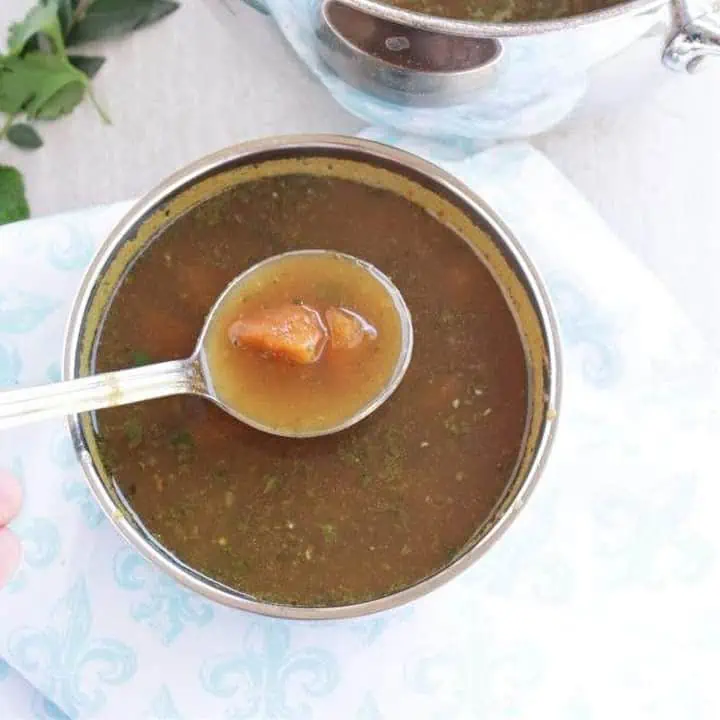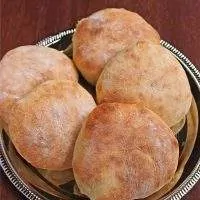Doing the A to Z International flatbread has been such a big exposure to baking bread. Just the basic flour, yeast, and water can be of such a different flavor depending on the method we use to proof it and bake it. This Croatian Flatbread is one such flatbread that I had so much fun baking. The Lepinja bread had the most beautiful crumb and it was so airy and porous. This Lepinja bread went through a 3-rise cycle instead of the regular 2-rise. This allowed the bread to have a beautiful flavor and also gave it a wonderful texture. I also used steam when baking. Using steam when baking has become one of my personal favorite methods to bake bread. It is so simple to attain that rustic crust when using steam. Lepinja bread which is also called Somun is a popular street food in the Balkans region, especially in Serbia, Croatia, and Bosnia. The bread can be served with any kind of dish as it can absorb any flavor it is served with. Somun bread is baked at a very high temperature which gives it an amazing rise, somewhat like pita bread. My son thought it was great bread to slice in between and make as sandwich bread. So, the options are unlimited as to how you want to serve this Croatian flatbread. Use it for a sandwich or serve it with soups and stew to soak up all the flavor. Preparation time - 15 minutes plus about 3 to 4 hours of rising timeBaking time - About 6 to 8 minutes per batchDifficulty level - IntermediateRecipe adapted from - A Spicy Perspective B for Boulanee Katchalu C for Chickpea Flatbread / Socca D for Dhal Puri E for Emirati Khameer F for Fruit Focaccia G for Gozleme H for Himbasha I for Indian Fry Bread J for Janta Roti K for Ka’ak
Ingredients to make Lepinja Bread - Makes 6
Bread Flour - 3 cups Active Dry yeast - 1 ½ tsp Sugar - 1 TBSP Milk - ⅓ cup Warm water - 1 cup (may need more or less) Salt - 1 ¼ tsp
Procedure to make Croatian Flatbread -
Making the Dough -
In a small bowl, add the warm milk along with sugar and yeast. Mix well and let the mixture proof for about 10 minutes. At the end of 10 minutes, the mixture will appear frothy and bubbly.
In a large bowl or the bowl of your mixer, add the yeast mixture, ½ cup of warm water, and salt. Add the flour and start kneading.
Add more water to make a very soft dough. The dough will be quite sticky. Knead the dough for 6 to 8 minutes and then let it rise for about an hour or until doubled in volume. I love using the proof setting in my oven to rise the dough.
Once the dough has risen, bring it out and punch it down gently. Now using the stand mixer or your hands knead the dough for a couple of more minutes and then let it rise again until doubled in volume. This time it took me only about 45 minutes for the dough to rise.
Shaping and Baking the Lepinja -
Once the dough has risen for the second time, place the dough on a heavily floured surface.
Using well-floured hands, divide the dough into 6 equal pieces.
Line a baking sheet with parchment paper.
Make a ball out of each piece of dough and Place it on the prepared sheet. Press down on each ball to flatten it and let the dough rise again for 20 to 30 minutes or until slightly puffy.
In the meantime, preheat the oven to 550 F. Place a tray filled with water on the bottommost shelf of the oven when it is preheating.
Once the dough has risen for the 3rd time, place it in the oven for 6 to 7 minutes or until the Lepinja bread is golden brown.
Remove from the oven and place the somun bread on a cooling rack to cool completely.
Soups to go with Somun bread
If you made this recipe and liked it, give a star rating on the recipe card or let me know in the comments below. You could also share it with me on Instagram using #MyCookingJourney and tagging me @sandhya.ramakrishnan. You could follow me and my recipes on Facebook |Instagram | Pinterest | Twitter/X
Recipe

